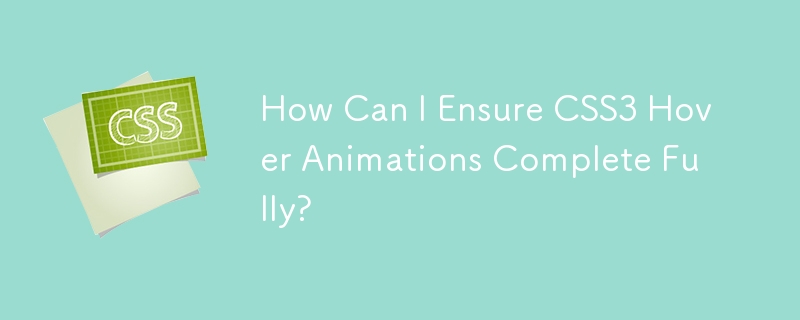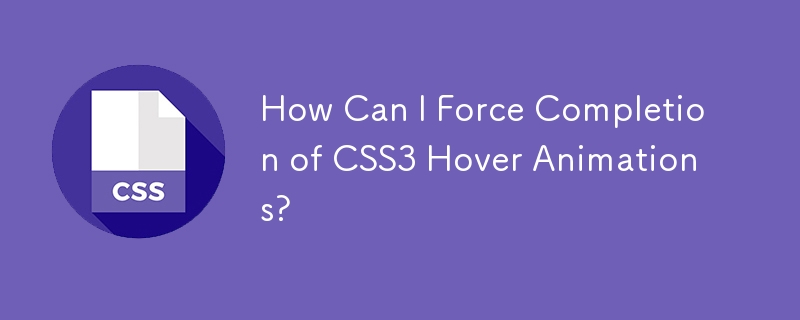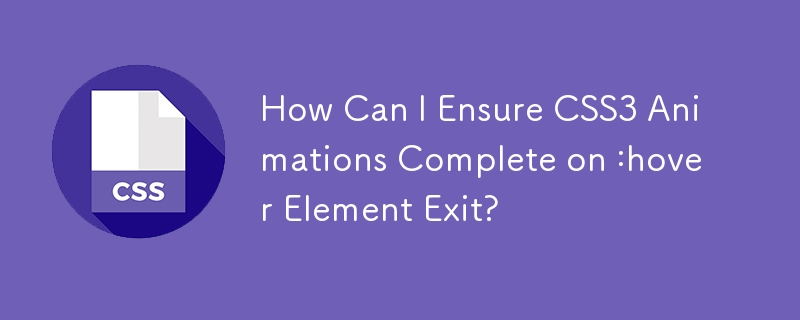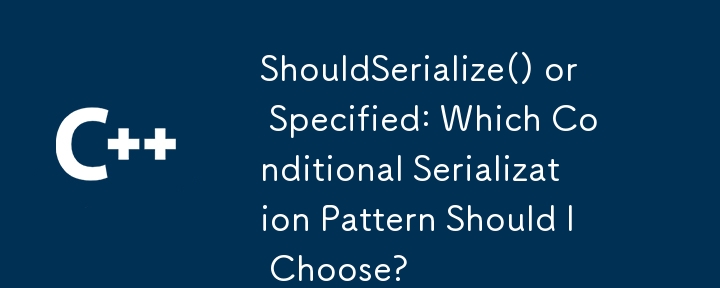Found a total of 10000 related content
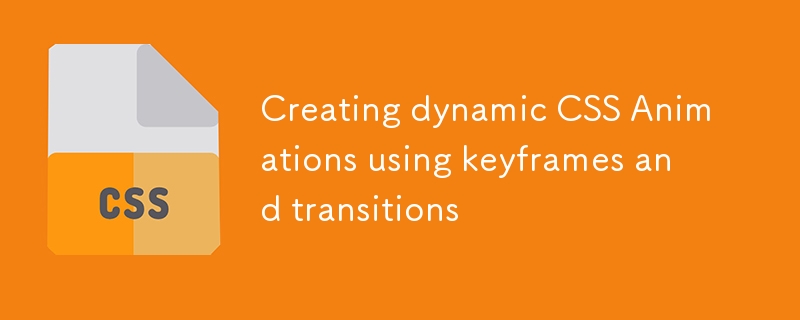
Creating dynamic CSS Animations using keyframes and transitions
Article Introduction:Keyframes are used for complex animations, and Transitions are used for state transitions. 1. Keyframes can define multi-stage animations, such as loading rotation effect, defined by @keyframes and applied with animation. 2. Transitions implements smooth changes in attributes, such as hover gradient color, which is controlled through transition attributes. 3. The two can be used in combination, such as button clicks to enlarge or bounce the effect to improve the naturalness of the interaction.
2025-07-14
comment 0
850

Enhancing UI State Styling with CSS Pseudo-classes (e.g., :hover, :active)
Article Introduction:CSS pseudo-class can enhance the interaction of web pages. 1. Button interaction: Use :hover and :active to achieve hover color change and click feedback. 2. Distinguishing link status: combine: link, visited,:hover,:focus, and:active to provide visual prompts. 3. Form control: Highlight the input box through:focus, and use:invalid and:valid to verify the status. 4. Notes: Use transition animations in moderation to keep them natural, pay attention to the problem of mobile:hover failure, keep the style of the entire site consistent, and ensure that keyboard users are accessible. Rational use of these pseudo-categories can significantly improve the user experience.
2025-07-08
comment 0
468
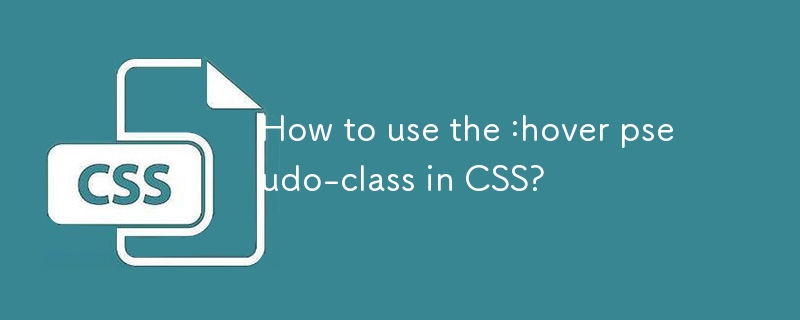
How to use the :hover pseudo-class in CSS?
Article Introduction:The :hover pseudo-class is used to realize style changes when mouse hovering. It is suitable for various elements such as buttons, menus, pictures, etc. The basic writing method is to add :hover after selectors, such as button:hover{background color change}. Common uses include button interaction, drop-down menus, picture enlargement, prompt display, etc. When using it, you need to note that the mobile hover may only trigger when clicked. The structure nesting may cause style failure. The z-index level, style coverage and debug with developer tools. At the same time, pay attention to compatibility and performance to avoid excessive animations affecting the experience.
2025-07-17
comment 0
286
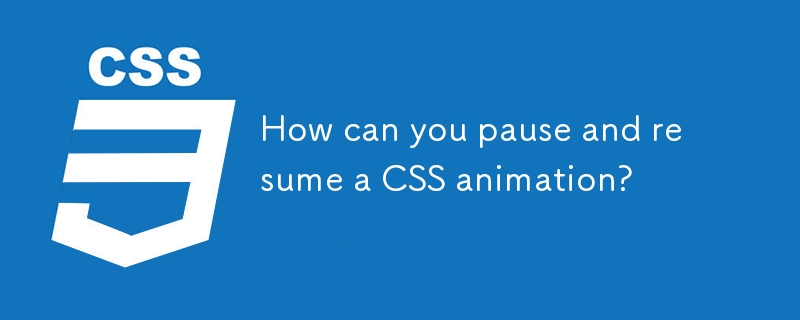
How can you pause and resume a CSS animation?
Article Introduction:To pause and restore CSS animation, the most direct way is to dynamically switch the animation-play-state attribute using JavaScript. Controlling this property through JavaScript allows pause and playback to be achieved without restarting the painting. The specific steps include: 1. Add an event listener (such as button click); 2. Check the current animation status; 3. Dynamic switching status. In addition, if you only need to pause the animation during hover, you can implement it through the :hover pseudo-class combined with @keyframes, but this method is suitable for simple interactions and is not suitable for complex logic. For multiple animations or more complex scenes, you can process animations by index, reset animation state or manage states with CSS variables, and pay attention to performance
2025-06-30
comment 0
684

How does the ::before and ::after pseudo-elements allow for styling non-DOM content?
Article Introduction:CSS pseudo-elements::before and ::after allow insertion and styling of non-DOM content without modifying HTML. By setting content attributes, you can add decorative text or symbols before and after the content of the element, and apply styles such as fonts, backgrounds, positioning and even animations, such as adding colored "Note:" tags or button hover animations. Common uses include dynamic icons, prompt tags, form tags and UI effects. However, it should be noted that if the content is not set, the pseudo-element is invalid; it cannot interact through JavaScript; and does not support nested HTML structures.
2025-06-08
comment 0
375
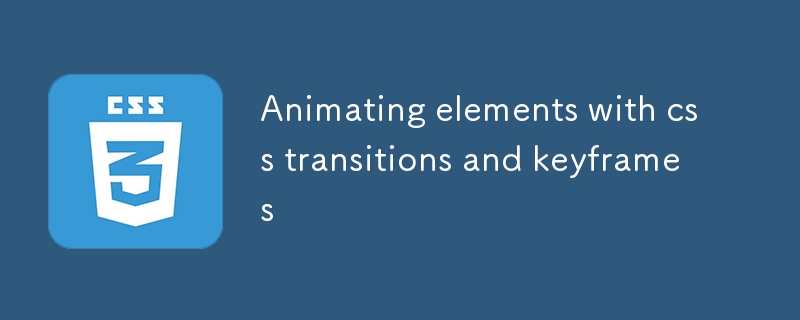
Animating elements with css transitions and keyframes
Article Introduction:The key to improving user experience in CSS animation is to choose transition and @keyframes reasonably. 1. Transition is suitable for simple state changes, such as button hover effect, which is achieved by defining attributes, duration, delay and speed curves; 2. @keyframes is suitable for complex animation sequences, such as loading animations, which controls the state of elements at different time points through multiple keyframes. Usage tips include: prioritizing the use of transform and opacity to improve performance, ensuring the initial consistency is consistent with the target state, and setting the ease function reasonably. Frequently asked questions: enable hardware acceleration in a timely manner and reduce nesting, check the property name and initial value when the transition does not take effect, and repeat animation playback can be performed through inf
2025-07-14
comment 0
775


Dave The Diver: How To Catch Spider Crabs
Article Introduction:In Dave The Diver, there are some creatures that are not easy to catch. Or, catch alive that is. The spider crab is one of those very species, making it seem like the only way to bring these crustaceans back up to land is to viciously crack them up w
2025-01-10
comment 0
809

Prepare for Interview Like a Pro with Interview Questions CLI
Article Introduction:Prepare for Interview Like a Pro with Interview Questions CLI
What is the Interview Questions CLI?
The Interview Questions CLI is a command-line tool designed for JavaScript learners and developers who want to enhance their interview
2025-01-10
comment 0
1437

Soft Deletes in Databases: To Use or Not to Use?
Article Introduction:Soft Deletes: A Question of DesignThe topic of soft deletes, a mechanism that "flags" records as deleted instead of physically removing them, has...
2025-01-10
comment 0
1051
